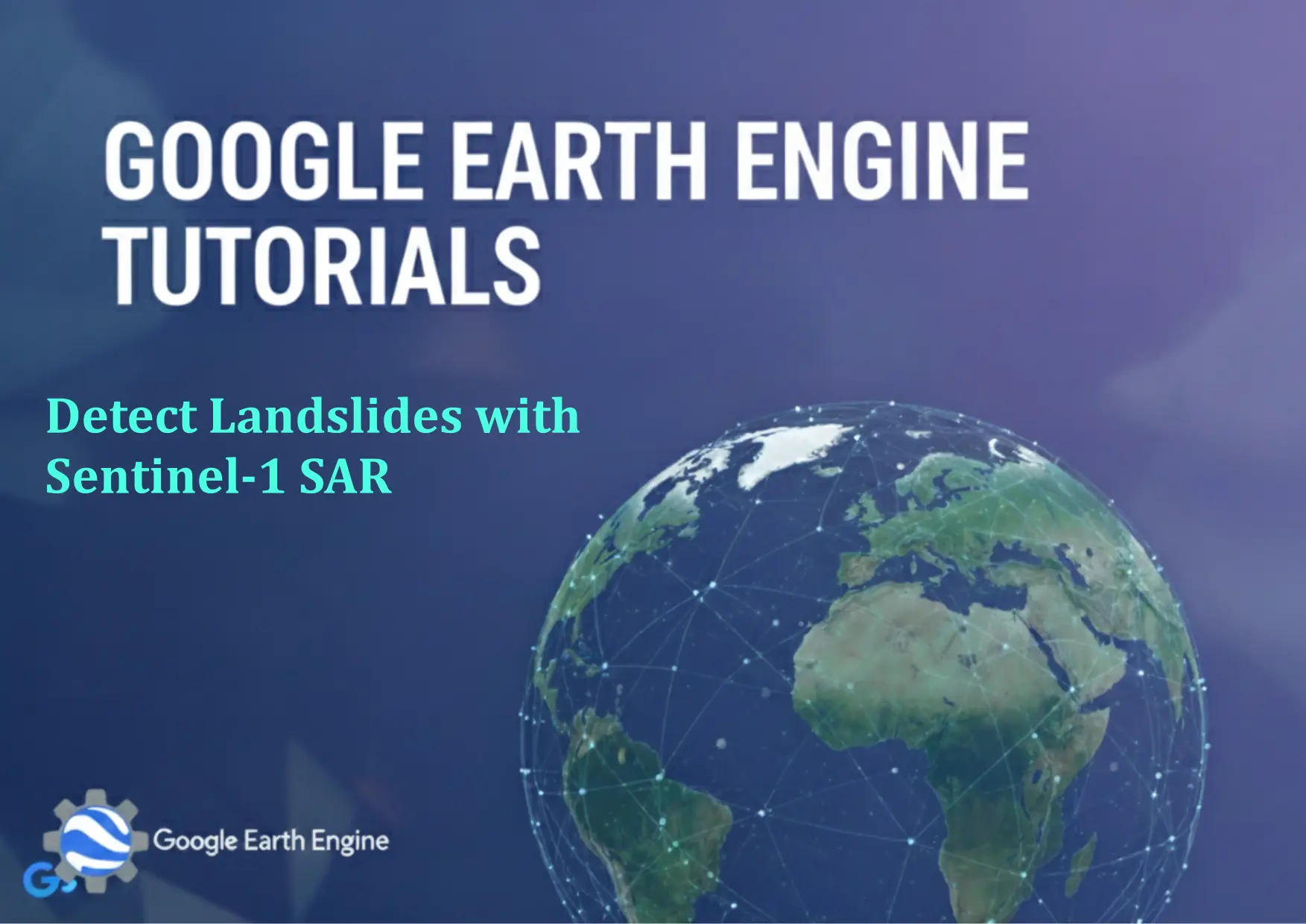Google Earth Engine Tutorial: Detect Landslides with Sentinel-1 SAR
Credit: Youtube Channel “Terra Spatial, Guide on landslide detection and monitoring using Sentinel-1 SAR imagery for geological hazard assessment.”
You can see all the tutorials from here: Techgeo Academy.
Introduction to Landslide Detection with Sentinel-1 SAR on Google Earth Engine
Landslides are natural disasters that pose significant risks to human life and infrastructure. Sentinel-1 Synthetic Aperture Radar (SAR) data, available through Google Earth Engine (GEE), offers high-resolution, all-weather imaging capabilities, making it ideal for monitoring and detecting landslides. This tutorial outlines the process of using GEE to analyze Sentinel-1 SAR data for landslide identification, leveraging the platform’s computational power and extensive geospatial datasets.
Data Preparation and Access
To begin, access the Sentinel-1 SAR dataset in GEE via the 'COPERNICUS/S1_GRD' collection. Filter the data by selecting scenes with the desired polarization (e.g., VH or VV) and temporal range. For example:
var dataset = ee.ImageCollection('COPERNICUS/S1_GRD')
.filter(ee.Filter.eq('instrumentMode', 'IW'))
.filterDate('2023-01-01', '2023-12-31');
Ensure the area of interest is defined using a geometry or a region of interest (ROI). Use geometry.bounds() or geometry.buffer() to refine the location.
Image Processing Steps
Apply preprocessing to the SAR images, such as calibration, speckle filtering, and terrain correction. For instance:
var preprocessed = dataset.map(function(image) {
return image.select('VH')
.clip(geometry)
.multiply(1000)
.fft()
.multiply(1000)
.multiply(ee.Image.constant(10).pow(ee.Image.constant(1.2)));
});
Use change detection techniques to compare pre- and post-landslide imagery. Differences in backscatter or coherence can indicate surface disturbances.
Feature Extraction and Analysis
Identify features associated with landslides, such as sudden changes in texture or amplitude. Utilize thresholds and edge detection algorithms from GEE's ee.Algorithms library. Example code for analyzing coherence:
var landslides = preprocessed.select('coherence')
.reduce(ee.Reducer.mean())
.clip(geometry)
.updateMask(preprocessed.select('coherence').gt(0.5));
Apply statistical methods or machine learning models to classify landslide-prone regions. Use image.reduceRegion() or ee.Classifier for accurate classification.
Visualization and Export
Visualize results using the GEE Code Editor. Add layers to the map for real-time inspection. Export data as GeoTIFF or Shapefile for further analysis:
Export.image.toDrive({
image: landslides,
description: 'landslide_mask',
folder: 'GEE_Exports',
maxPixels: 1e10
});
Customize the visualization by adjusting false-color composites or using specific bands for enhanced detection.
FAQ
How do I access Sentinel-1 SAR data in Google Earth Engine?
Use the 'COPERNICUS/S1_GRD' dataset in the GEE API. Filter by parameters like date, polarization, or acquisition mode.
How accurate is landslide detection with SAR data?
Accuracy depends on data quality, preprocessing steps, and the specific algorithms used. SAR data is effective for detecting surface changes but may require ground-truthing for validation.
Can I use this method for real-time landslide monitoring?
Yes, GEE's cloud computing allows real-time processing of Sentinel-1 data. However, satellite revisit cycles and data availability may affect timeliness.
What are the requirements for running this tutorial?
A GEE account, basic programming knowledge (JavaScript or Python), and familiarity with geospatial data analysis.
Are there alternatives to Sentinel-1 SAR for landslide detection?
Yes, other datasets like Landsat, SAR from other missions, or LiDAR can be used. However, Sentinel-1 provides consistent coverage and high resolution.





